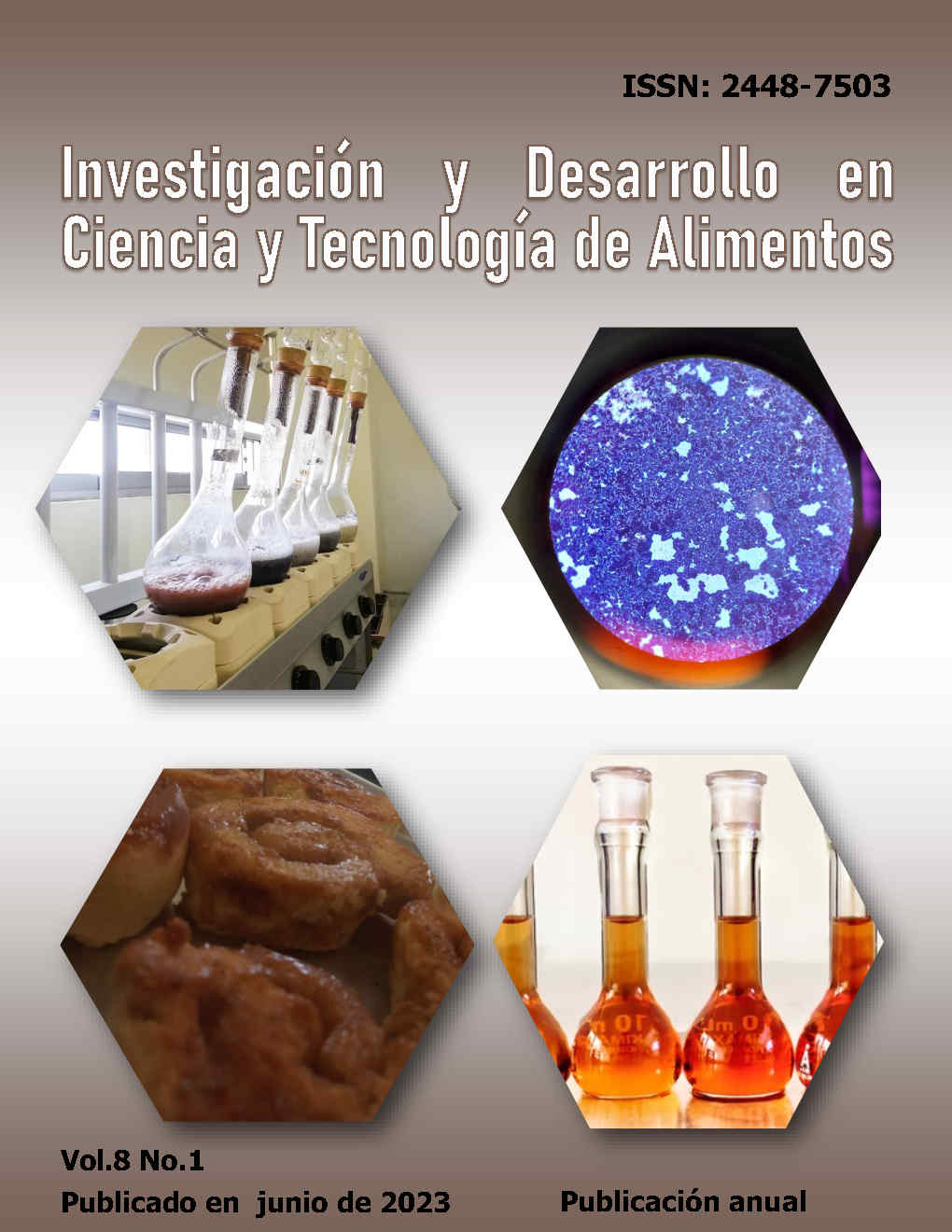Elaboración de un dulce a base de leche deslactosada tipo cajeta y aditivos alimentarios
DOI:
https://doi.org/10.29105/idcyta.v8i1.72Keywords:
Milk candy, Food additive, Sensorial, Lactose-milk FreeAbstract
Functional confectionery is a response from food science and technology to an increasingly health-conscious society that requires products that are free and/or reduced in sugars, fats, and sodium. The objective of this research was to develop a cajeta-type sweet formulation from lactose-free milk and without the addition of sugars. For this, three formulations were made from lactose-free milk and with sorbitol. The guidelines of NOM-243-SSA1-2010 and NOM-051-SCFI/SSA1-2010 in the use of food additives and physicochemical specifications are considered. A sensory evaluation of each formula was performed. With the chosen formula, the calculation of nutrients for the nutritional declaration was made. According to the results, the formula with less sorbitol was more convenient since it exempted it from not having warning legends in the nutritional label. The significant effect of sorbitol concentration on flavor and color is observed. In conclusion, the development of cajeta-type dulce de leche can represent a functional alternative for people who take care of their health. It is of interest that the use of additives is imminent when it is required to match the techno-functional properties of sugar.
Downloads
References
Casp, A. y April, J. (2013). Procesos de Conservación de Alimentos. Madrid: Ediciones Mundi Prensa.
Cruz D. (2017). Tabla Nutrimental. Obtenido de http://www.sedecotlaxcala.gob.mx/index.php/tramites-y-servicios/comercio-y-servicios/tabla-nutrimental
Dainese R., Casellas F., Mariné-Barjoan E., (2014). Perception of lactose intolerance in irritable bowel syndrome patients. Eur J Gastroenterol Hepatol; 26: 1167-1175 DOI: https://doi.org/10.1097/MEG.0000000000000089
Encuesta Nacional de Salud Pública 2016. Disponible en http://ensanut.insp.mx/doctos/ENSANUT2016_PresentacionOficialCorta_09Nov2016.pdf
FAO. (2020). Etiquetado de alimentos. Obtenido de https://www.fao.org/food-labelling/es/
Fennema O. (2008). Química de los Alimentos. Zaragoza, España. 4 ed. pp. 1025 – 1051.
MODIFICACIÓN a la Norma Oficial Mexicana NOM-051-SCFI/SSA1-2010, Especificaciones generales de etiquetado para alimentos y bebidas no alcohólicas preenvasados-Información comercial y sanitaria, publicada el 5 de abril de 2010. Diario Oficial de la Federación con fecha 27 de marzo de 2020.
PROYECTO de Norma Oficial Mexicana PROY-NOM-185-SSA1-2000, Bienes y servicios. Mantequilla, cremas, leche condensada azucarada, leches fermentadas y acidificadas, dulces a base de leche. Especificaciones sanitarias. Diario Oficial de la Federación con fecha 19 de mayo de 2000.
Walstra P., Geurts T. J. Noomen A. (1999) Dairy Technology. Principles of Milk Properties and processes. Marcel Dekker, New York, NY; 189–209. DOI: https://doi.org/10.1201/9780824746414
Withney, E. and Rolfes S. R., (2018). Understating nutrition, 11th edn. Thomas Wadsworth, Belmont.
Downloads
Published
How to Cite
Issue
Section
License
Copyright (c) 2023 K. I. Martínez-González, F.R. Ramos-Vargas, C.A. Campos-Álvarez, R.L. Mendoza-Ramos, E. Mares-Mares

This work is licensed under a Creative Commons Attribution 4.0 International License.
Los autores/as que publiquen en esta revista aceptan las siguientes condiciones:
a. Los autores/as conservarán sus derechos de autor y garantizarán a la revista el derecho de primera publicación de su obra, el cual estará simultáneamente sujeto a la Licencia Creative Commons Atribución 4.0 Internacional. que permite a terceros compartir la obra siempre que se indique su autor y su primera publicación esta revista.
b. Los autores/as pueden realizar otros acuerdos contractuales independientes y adicionales para la distribución no exclusiva de la versión del artículo publicado en esta revista (p. ej., incluirlo en un repositorio institucional o publicarlo en un libro) siempre que indiquen claramente que el trabajo se publicó por primera vez en esta revista.
c. Se permite y recomienda a los autores/as a publicar su trabajo en Internet (por ejemplo en páginas institucionales o personales) posterior al proceso de revisión y publicación, ya que puede conducir a intercambios productivos y a una mayor y más rápida difusión del trabajo publicado.





